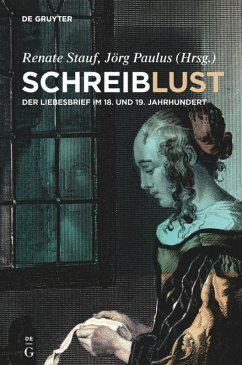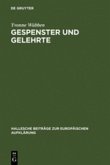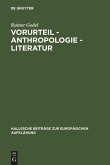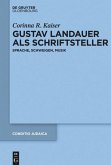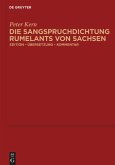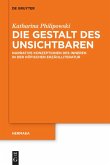This volume considers the origins of the love letter and the passion for writing it during the 18th and 19th centuries. It examines the conditions for writing and reading love letters, and their modalities and techniques, which led to the development of a unique culture of love letters in day-to-day communication and in their corresponding artistic and literary forms. Both well-known exchanges of letters and others that have until now been largely untapped document the creation of an emphatic model of love and private life. The work thus provides valuable insights into the cultural practice of documenting feelings.
Der Band widmet sich der SchreibLust in Liebesbriefen des 18. und 19. Jahrunderts und ihrer Genese. Untersucht werden Schreib- und Leseanlässe, Modalitäten und Techniken, die zur Ausprägung einer spezifischen Liebesbriefkultur in der Alltagskommunikation und in damit korrespondierenden künstlerischen, namentlich literarischen Formen führen. Der Bogen der betrachteten Korrespondenzen reicht von einer verbotenen Liebe im estnischen Reval des 17. Jahrhunderts über bekannte Paare wie Meta Moller und Friedrich Klopstock, Goethe und Charlotte von Stein, Karoline von Günderrode und Friedrich Kreuzer, Clara und Robert Schuhmann und unbekannte wie Georg Ernst zu Gilsa und Henriette von der Malsburg oder Jakob Henle und Elise Egloff bis hin zu Materialien galanter Korrespondenz bei Stéphane Mallarmé. Konstellationen der epistolären Intimität werden in ihrer Verflechtung mit philosophischen, theologischen, ästhetischen und wissenschaftlichen Diskursen beleuchtet. Dies ermöglicht kulturwissenschaftlich aufschlussreiche Einsichten in Praktiken der Verzeichnung von Gefühlen.
Der Band widmet sich der SchreibLust in Liebesbriefen des 18. und 19. Jahrunderts und ihrer Genese. Untersucht werden Schreib- und Leseanlässe, Modalitäten und Techniken, die zur Ausprägung einer spezifischen Liebesbriefkultur in der Alltagskommunikation und in damit korrespondierenden künstlerischen, namentlich literarischen Formen führen. Der Bogen der betrachteten Korrespondenzen reicht von einer verbotenen Liebe im estnischen Reval des 17. Jahrhunderts über bekannte Paare wie Meta Moller und Friedrich Klopstock, Goethe und Charlotte von Stein, Karoline von Günderrode und Friedrich Kreuzer, Clara und Robert Schuhmann und unbekannte wie Georg Ernst zu Gilsa und Henriette von der Malsburg oder Jakob Henle und Elise Egloff bis hin zu Materialien galanter Korrespondenz bei Stéphane Mallarmé. Konstellationen der epistolären Intimität werden in ihrer Verflechtung mit philosophischen, theologischen, ästhetischen und wissenschaftlichen Diskursen beleuchtet. Dies ermöglicht kulturwissenschaftlich aufschlussreiche Einsichten in Praktiken der Verzeichnung von Gefühlen.

